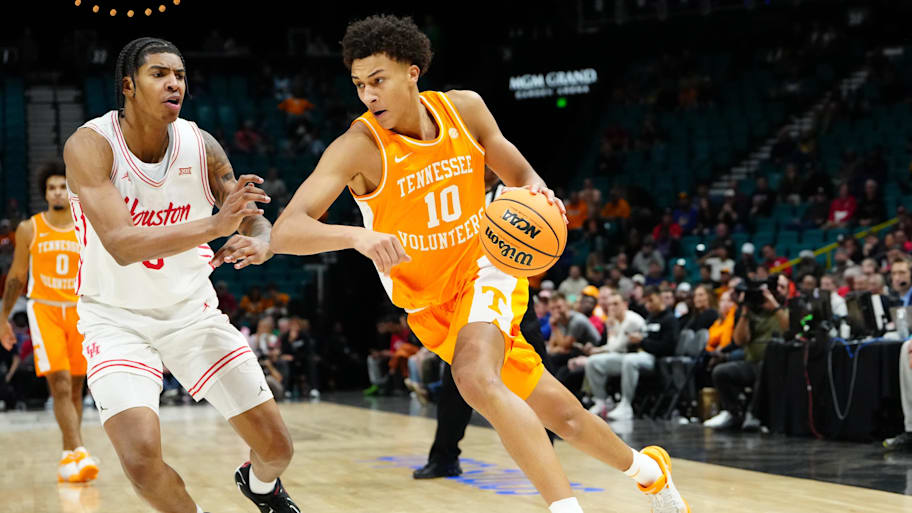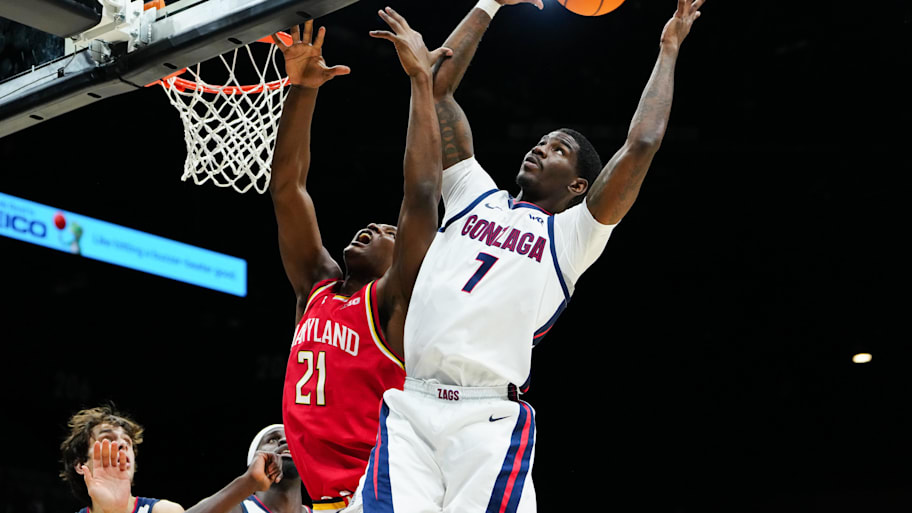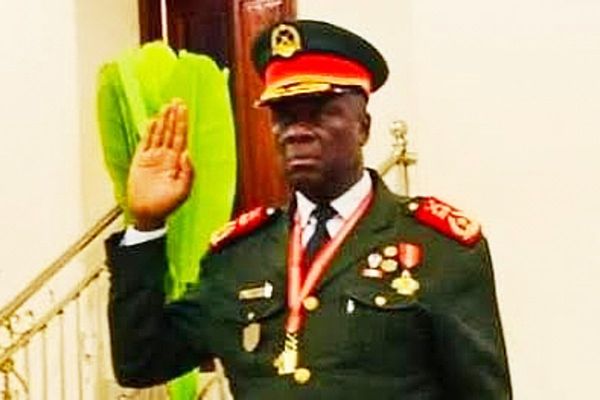
LAS VEGAS — Arguably the biggest game of the first two days at the Players Era Championship was Tuesday’s showdown between No. 17 Tennessee and No. 3 Houston. It was a rematch of last season’s Elite Eight matchup that sent the Cougars to the Final Four. The game served as quite the first real test of the season for a Volunteers team whose schedule up to that point had been soft. But as the game came down to the wire, it became increasingly obvious that only Tennessee was playing for a spot in the event’s championship game Wednesday. And even the Vols’ spot was very much up in the air.
Why?
One of the many ways Players Era is different from the other popular Feast Week college basketball tournaments is its format. The 18 men’s teams play two prescheduled games on the first two days, then the teams with the best point differential over two games (assuming more than two teams go 2–0) play for the championship.
Because Houston beat Syracuse on Monday by just four points, the Cougars’ path to a big enough point differential to advance disappeared early in the second half. Tennessee won, 76–73. The Vols beat Rutgers, 85–60 on Monday (although differential is capped at +20 in the system, if things weren’t complicated enough), which put them at +23 and at least in the conversation for a title game appearance. But within a couple of hours postgame, Michigan and Gonzaga finished off dominant wins that pushed their differentials well above the Vols. Gonzaga’s differential ended at +30 after beating Alabama by 10 and Maryland by 39, while Michigan blitzed San Diego State by 40 and Auburn by 30 maxing out at +40 differential.
Tournament co-founder Seth Berger says it means “every shot matters, every basket matters, every minute matters.” The energy in the building said otherwise. The championship matchup was decided not in the thrilling top-20 showdown, but via a slow trickle as two other elite teams bludgeoned clearly inferior opponents.
Other than one particularly loud Kansas fan near the media seating who seemed to adopt the Cougars in hopes his Jayhawks (and their +21 point differential) would get through to the title game, the point differential plan seemed largely lost on those in attendance. Tennessee’s players didn’t seem to buy in either: Guard Bishop Boswell called Houston “too good of a team to worry about points” against. And in Berger’s media availability session after the game, he spoke about overhearing a conversation among Tennessee fans unsure if their win put them in the championship. It’s a system Berger points out is commonplace in AAU tournaments, but it’s certainly unorthodox for college basketball.
Regardless, the point differential system is here to stay, at least for as long as Players Era’s erosion of events like the Maui Invitational continues. Berger told reporters that the event is full speed ahead for a 32-team field in 2026 that will stretch over three weeks, featuring four eight-team pods with three preset matchups for each team. Point differential will send the best team from each pod into seeded championship and third-place games.
It’s a daring choice, one that could prove brilliant or one that could end up as a crippling detail of the disruptor in college basketball scheduling.
“When we started Players Era, the idea was that things in college sports were changing really quickly and how could we be a positive part of that change?” Berger said. “How do we do something different, so you’re not watching just the same thing you’ve been watching every November, just with more teams. And so the system over time, I think, will be pretty simple and understandable to fans. … We’re trying to bring November basketball to more casual fans, so clearly one of the things we have to do is continue educating about why our format is unique and it’s exciting.”
Players Era has shaken things up in a major way from the traditional Thanksgiving college hoops calendar with its seven-figure NIL opportunities for participating teams. It’s not the only reason big-name programs have flocked away from events like Maui and Battle 4 Atlantis, but its arrival two years ago has precipitated the weakening of those fields.
Beyond the point differential conversation (and the death of more traditional bracketed tournaments born in large part out of the desire from both teams and TV partners for matchup certainty), the most popular criticism of Players Era seems to be the environment. Games played in half-full larger arenas in Las Vegas (the two venues seat 12,000 and 16,000, respectively) just don’t produce quite the same appeal (particularly for the TV audience) as the homey Lahaina Civic Center or even mood-lit ballroom in Atlantis.

But that doesn’t mean there isn’t solid fan interest. Driving fans to these Thanksgiving week events has long been a challenge for event operators across the country. Having attended plenty of similar events over the years, the overall fan turnout through the first two days has looked relatively strong. Attendance wasn’t officially announced, but the matchups featuring bigger fan bases (Kansas, Iowa State, Gonzaga and Creighton to name a few) had most of the seats on either sideline’s lower bowl full with a fairly lively atmosphere. It certainly helps that Las Vegas is a much more reachable (and cheaper) destination for most fans to travel to than a tropical island.
The long-term viability of the event, particularly as it plots its expansion to 32 teams, hinges on a lot more than ticket sales. While Berger insists the men’s event this year is operating in the black, industry sources point to the importance of the event’s looming media rights deal. It’s critical to Players Era becoming a mainstay on the college basketball calendar … particularly given the cost-intensive nature of the NIL deal structure of the event. TNT has broadcast the first two years of the event, and Sports Business Journal reported ESPN, Fox, Netflix and Warner Bros. Discovery are potential partners moving forward.
That said, the event growing to four games for the top teams could create a new set of problems even if the media rights money is there. Starting in 2026, the NCAA rules change regarding multiteam events. Teams will be able to play up to 32 games regardless of their participation in multiteam events (previously, the 31-game maximum could only be met by playing in an MTE). Teams will also be able to play in multiple MTEs, a change from the old rules. Players Era can only take on the media rights for games if they are part of a MTE, but at present MTEs cannot be more than three games. Players Era may be able to navigate that by breaking into multiple events, but that could still face pushback from conferences (and their respective TV partners) that don’t want that significant portion of teams’ TV inventory going to a different network. One industry source tells SI that there has been early resistance at the conference level in at least one high-major league over their teams participating.
“I don’t think these schools will be able to sign away four games to Players Era to sell to [a TV partner],” the source says.
That might only be magnified after Players Era officially announced its partnership with the Big 12. The conference’s eight top teams will receive automatic bids into the event starting next year through 2030. The Big 12 reportedly is taking on a 15% equity stake in Players Era in the deal. As the power conferences and their affiliated TV partners jockey for money and influence in the sport, the competing alignments could prove challenging.
At its core, Players Era has made clear it wants to be different from the sport’s traditional MTEs. And its early success in recruiting participants (thanks in no small part to the impressive financial package it presented to teams) has made it a must-watch part of the November college hoops calendar. But as Berger plots his plan to build Players Era into a “major U.S. national sporting event,” many key roadblocks still lay ahead. How they navigate them will dictate whether Players Era can take over the early part of college basketball or be remembered as a blip in the sport’s long, ever-changing history.
More College Football from Sports Illustrated
Listen to SI’s new college sports podcast, Others Receiving Votes, below or on Apple and Spotify. Watch the show on SI’s YouTube channel.
This article was originally published on www.si.com as How the Players Era Turned a Top 20 Showdown Into a Game With No Stakes.







